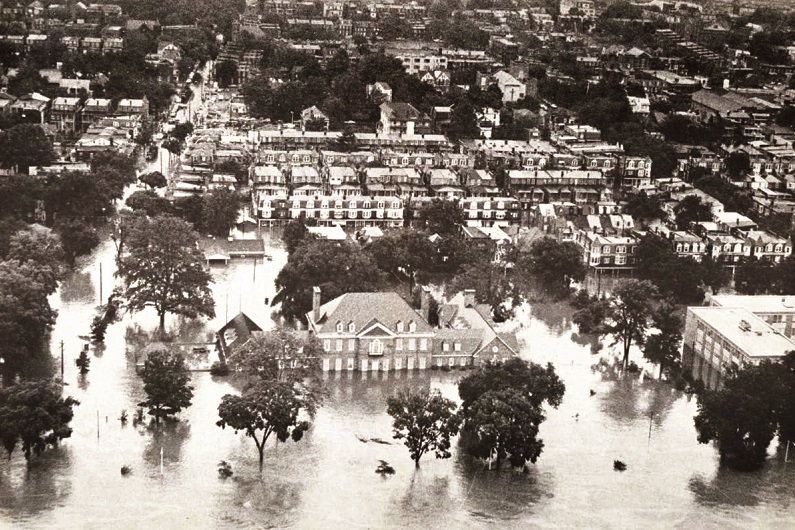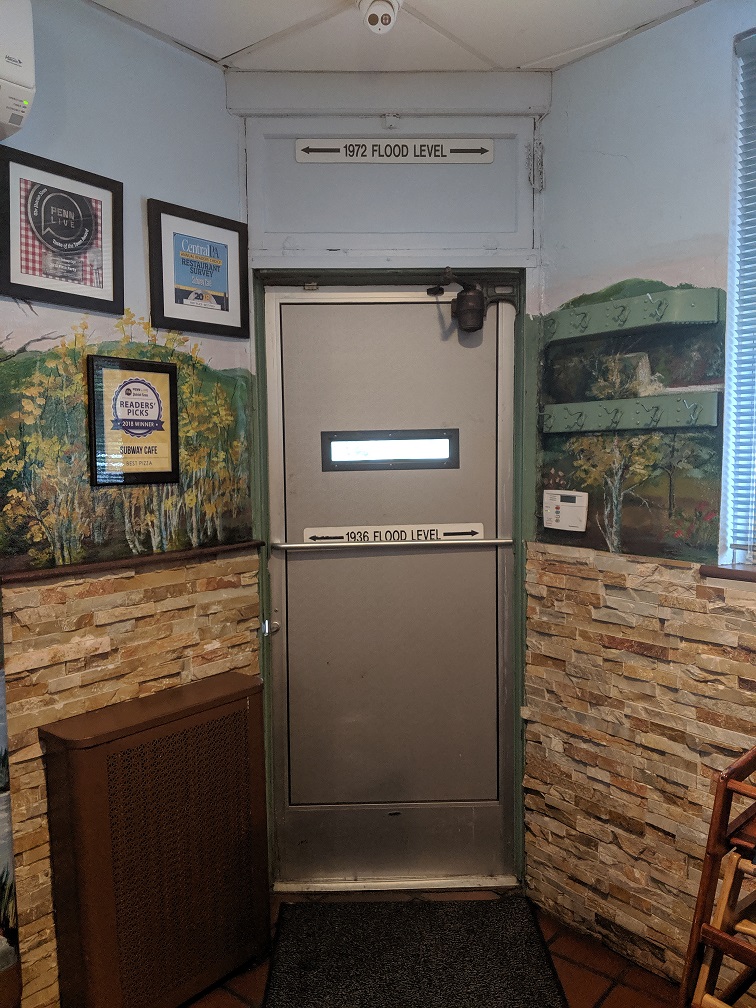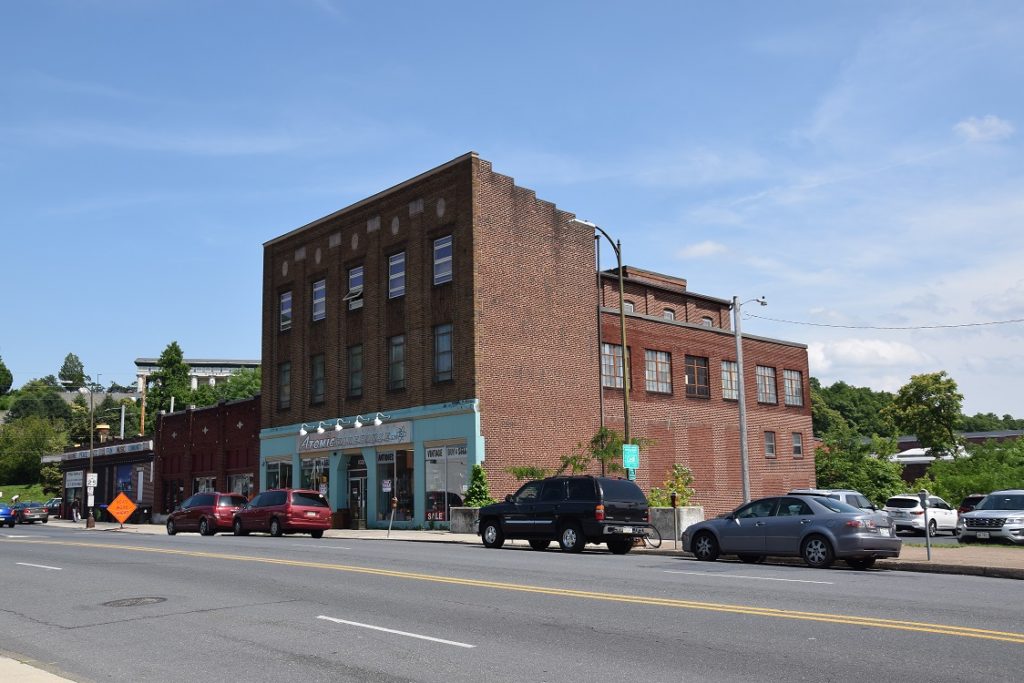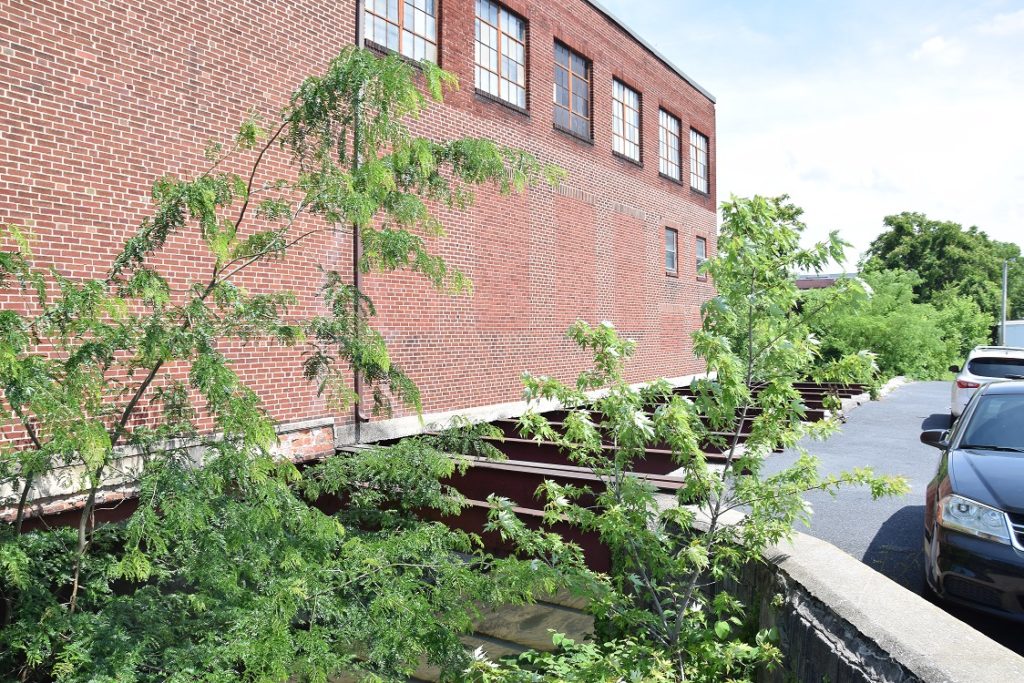Much like the early settlers of Harrisburg, many of us today feel drawn to bodies of water, whether for their natural beauty, ability to fuel industries, or provision of vital resources to developing communities.
At the same time the very resource which has enabled many of our communities to grow and prosper has also placed our most treasured historic resources at risk. Combined with increased awareness about the dangers of climate change and sea level rise, this reality has encouraged local communities and preservationists alike to consider the potential impacts of future weather events on historic properties.
As part of the Commonwealth’s Disaster Planning for Historic Properties Initiative, the PA SHPO and the Tri-County Regional Planning Commission (TCRPC) have partnered to continue the state’s efforts to inventory flood-prone historic buildings for integration into the County’s Hazard Mitigation Plan.

The Tri-County Historic Resource Survey (Tri-County Survey) will survey and inventory properties 45 years in age or older located within the 100-year (1% Annual Chance Flood Hazard Area) and 500-year (0.2% Annual Chance Flood Hazard Area) floodplain, as defined by the Federal Emergency Management Agency. Commonwealth Heritage Group’s West Chester office, assisted by ASC Group in Harrisburg, will conduct the reconnaissance-level historic resource survey in three counties along the Susquehanna River: Dauphin, Perry, and Cumberland.
Why Harrisburg?
The City of Harrisburg will serve as a major focus of the Dauphin County survey. The county received a National Disaster declaration following Hurricane Sandy in 2013, and the City experiences flooding events from multiple sources including the Susquehanna River and Paxton Creek. An estimated 18.36% of the City’s tax parcels are located in the 100 or 500-year floodplains with 15.74% containing buildings over 45 years in age. The City of Harrisburg has received a Certified Local Government grant to help support the survey efforts.
The threat of flooding is well known to residents and business owners alike in this city. In just our first few days in the field, Commonwealth’s survey team encountered two interesting examples. We interviewed a longtime resident on Graham Street who remembers when his 1940s bungalow was inundated with four feet of water from Tropical Storm Agnes in 1972

The Subway Café, a small business located on Herr Street, keeps a physical reminder of the floods of 1936 and 1972 with the high-water mark inscribed onto their front door


How were the survey areas determined?
With so many areas in the City of Harrisburg located within a floodplain, a prioritized list of factors was analyzed in order to select specific areas for survey. These included if an area had been previously surveyed for historic resources, and if the location is near any planned infrastructure projects which might have a potential to effect historic resources.
Regional planning documents and hazard mitigation plans were also reviewed to identify survey areas which would support other planning efforts throughout the region.
For example, the Paxton Creek Master Plan presents a strategy to restore the natural ecological function of the southern reach of Paxton Creek and reduce the 100-year flood elevation to 314 feet. An industrial corridor developed along Cameron Street due to its easy access to the Pennsylvania Canal, and later the Pennsylvania Railroad, and experiences regular flooding


Local municipal organizations such as the Tri-County Regional Planning Commission, the City of Harrisburg, and community organizations were also asked to help identify local community landmarks located in flood-prone areas.
If you know of a community landmark located in Dauphin County you think should be considered for survey, please fill out our online survey form. Don’t worry about whether it’s in a flood-prone area; we will compare the responses we receive against FEMA’s floodplain maps to determine which suggestions are most at risk.
What types of information will be collected?
Surveyors from Commonwealth’s team will digitally record physical building information using customized survey forms supported by Esri’s Collector application on handheld tablets. Building information will include:
- address information,
- building materials,
- architectural style,
- construction date,
- historic/current function,
- physical condition and
- architectural integrity.
Additionally, flood hazard information including the first-floor elevation, low opening, and low adjacent grade will be recorded using Trimble GPS units.
How will this information be used to mitigate flooding?
The information collected during survey will be used by hazard mitigation planners to better understand how flooding will affect historic properties in the survey areas.
Building elevation data can be used to estimate property damage and content loss to better prepare communities for weather related emergencies.
Information about a building’s structure and materials can also be used to help develop mitigation strategies to reduce the potential impact of flood damage.
Keep an eye on this space for future updates as we continue on to other communities in Dauphin, Perry, and Cumberland Counties!
Today’s guest author is Candice N. Strawley. Candice serves as the Regional Director and Architectural Historian at Commonwealth Heritage Group’s West Chester, Pennsylvania office. She serves as Project Manager on the Tri-County Historic Resource Survey project. Ms. Strawley specializes in the identification, evaluation and documentation of historic buildings and holds a M.A. in Historic Preservation from the University of Delaware.
Comment Policy
PHMC welcomes and encourages topic-related comments on this blog. PHMC reserves the right to remove comments that in PHMC’s discretion do not follow participation guidelines.
Commenters and Comments shall be related to the blog post topic and respectful of others who use this site.
Commenters and Comments shall not: use language that is offensive, inflammatory or provocative (this includes, but is not limited to, using profanity, obscene, or vulgar comments); disparage other commenters or people; condone illegal activity; identify the location of known or suspected archeological sites; post personal information in comments such as addresses, phone numbers, e-mail addresses or other contact details, which may relate to you or other individuals; impersonate or falsely claim to represent a person or an organization; make any commercial endorsement or promotion of any product, service or publication.
If you would like to comment on other topics not related to this blog post but related to PHMC, please fill out the PHMC Contact Us Form.
Leave a Reply